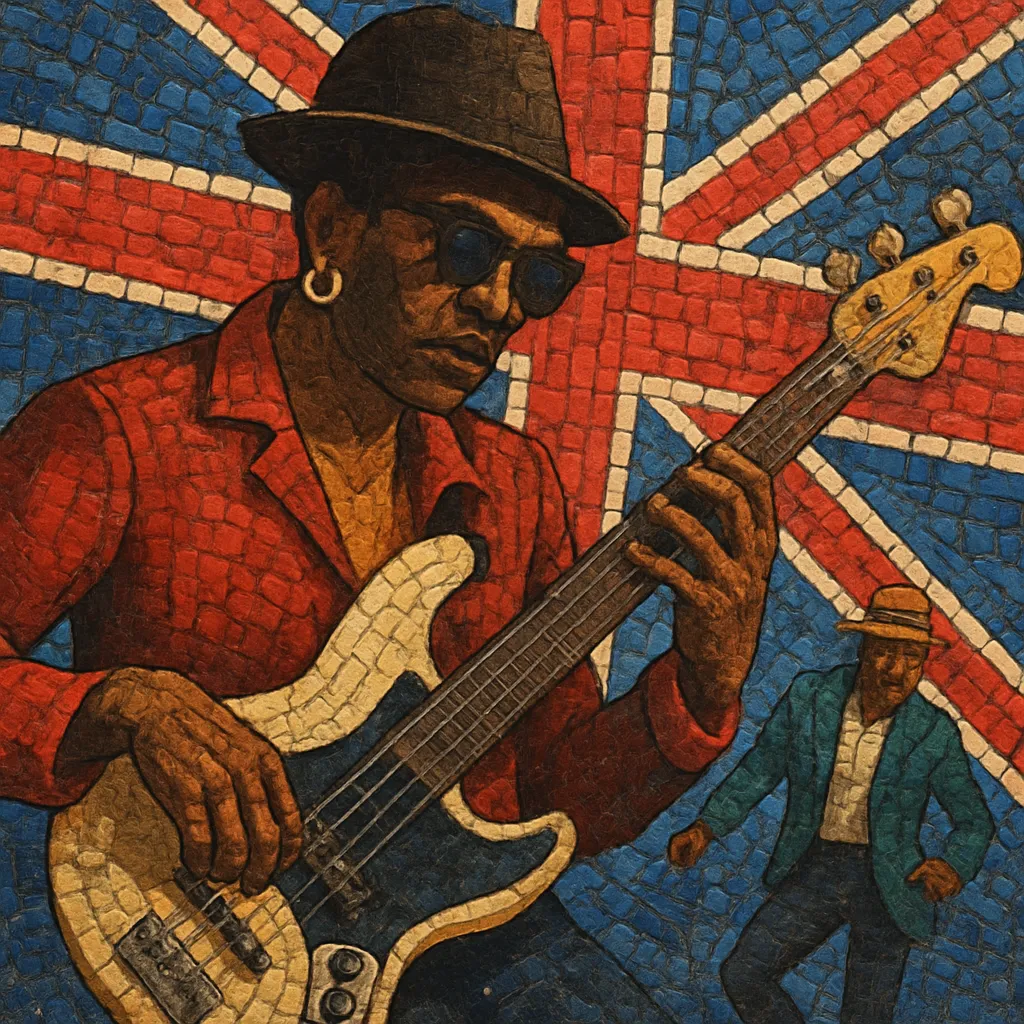
Brit funk (often styled Brit-funk) is a late‑1970s to early‑1980s UK blend of American funk, disco, and jazz-fusion filtered through British club culture and a vibrant Afro‑Caribbean diaspora.
Characterized by tight, syncopated rhythm sections, slap bass, sparkling Rhodes and clavinet, jazz‑tinged chord voicings, bright horn stabs, and polished yet live band production, the style favors mid‑tempo grooves designed for the dancefloor. Many tracks feature extended vamps, instrumental solos, and breakdowns that reflect both jazz musicianship and DJ‑friendly structure.
The sound sits between disco’s four‑on‑the‑floor drive and jazz‑funk’s harmonic richness, with an ear for catchy hooks and party‑ready refrains. It became a cornerstone of UK club life, feeding into rare groove culture and setting the stage for acid jazz and later broken beat.
Brit funk emerged in the UK club circuit in the late 1970s, when local bands began reinterpreting American funk, disco, and jazz-fusion with a distinctly British sensibility. London’s Afro‑Caribbean communities, all‑dayers, and weekender events nurtured the scene, while specialist radio shows and soul DJs (on the BBC and pirates) championed the new homegrown sound.
By the early 1980s, acts like Hi‑Tension, Light of the World, Incognito, Freeez, Shakatak, Central Line, Atmosfear, Beggar & Co, and Level 42 were charting in the UK and making waves in clubs. Their records balanced dancefloor immediacy with sophisticated musicianship: crisp drums and percussion, slap bass, bright horns, and jazz‑flavored keys. Independent labels and 12‑inch singles helped the music thrive, with extended mixes tailored to DJs.
As the decade progressed, Brit funk’s musicians and audiences fed directly into rare groove and the late‑1980s acid jazz movement. Its musicianship and rhythmic language later informed West London’s broken beat scene and influenced strands of UK street soul and nu‑jazz. While some bands moved toward pop or synth‑leaning production, the core Brit funk aesthetic remained a touchstone for UK dance and jazz scenes.
Compilations, reissues, and club nights revived interest from the 1990s onward, cementing Brit funk’s role as a foundation for modern UK groove‑based music. Contemporary producers and bands continue to sample, reinterpret, and perform the repertoire, keeping its sleek, dance‑centric jazz‑funk spirit alive.
Aim for mid‑tempo dancefloor energy (roughly 105–120 BPM). Build a locked‑in pocket: tight kick and snare, busy 16th‑note hi‑hats, and syncopated ghost notes. Use occasional four‑on‑the‑floor sections or breakdowns to lift the floor.
Center the bass: employ syncopated, melodic lines with occasional slap and pops; keep notes short and percussive to interlock with the kick. Rhythm guitar should provide clean, palm‑muted 16th‑note ‘chanks’, Nile Rodgers‑style, leaving space for keys and horns. Add Latin/Afro‑Caribbean percussion (congas, shakers, cowbell) to thicken the groove.
Favor jazz‑leaning voicings (maj7, 9ths, 11ths, 13ths, sus chords) over static triads. Rhodes, clavinet, and polysynths (pads and comping) should color the harmony. Write hooks that are simple and memorable, with call‑and‑response between vocals, horns, or keys. Allow room for short solos (sax, trumpet, guitar, or synth) over extended vamps.
Structure tracks for DJs: intro grooves, breakdowns, instrumental bridges, and longer outros. Keep the mix crisp and bright—snappy snare, present bass, and clear horn stabs. Layer live playing with tasteful synths and string machines; avoid over‑quantizing so the feel remains human.
When using vocals, lean into uplifting, nightlife‑oriented themes—dance, city life, romance, and community. Keep verses compact and choruses hook‑forward so they cut through on the dancefloor.

